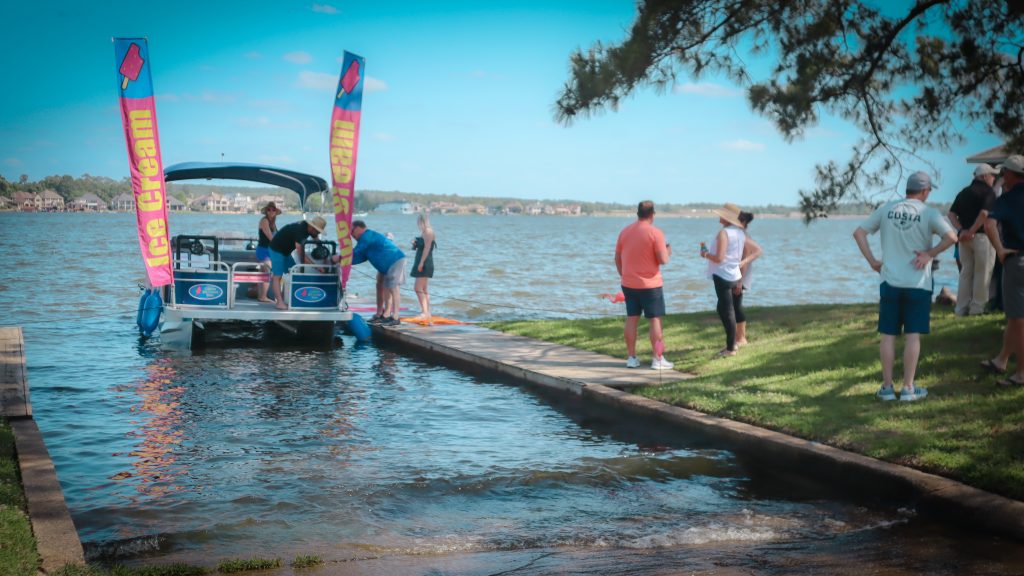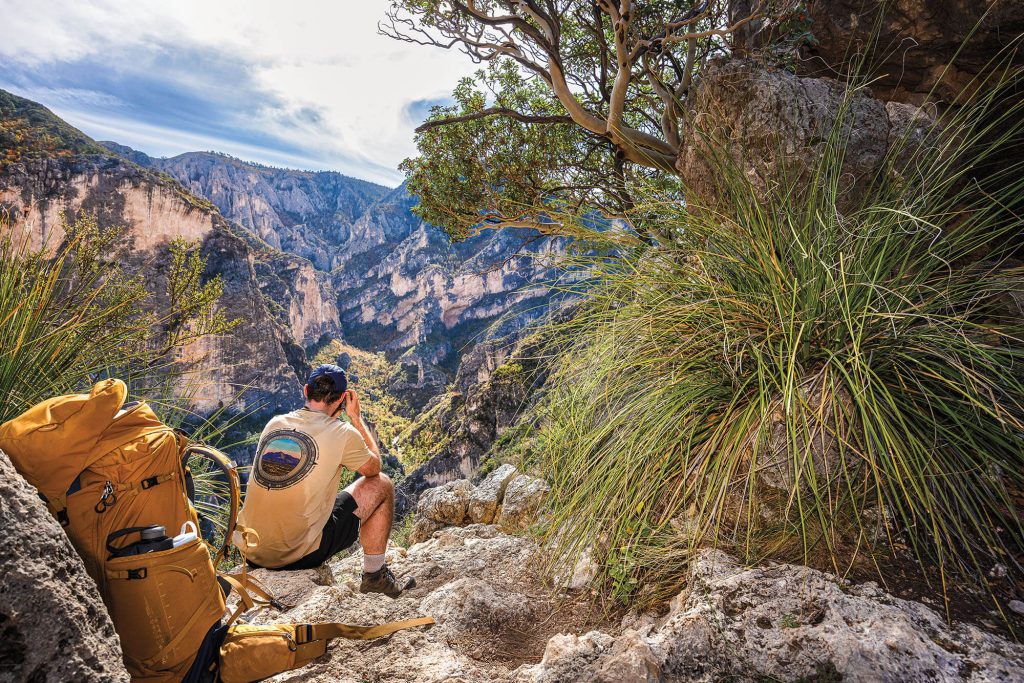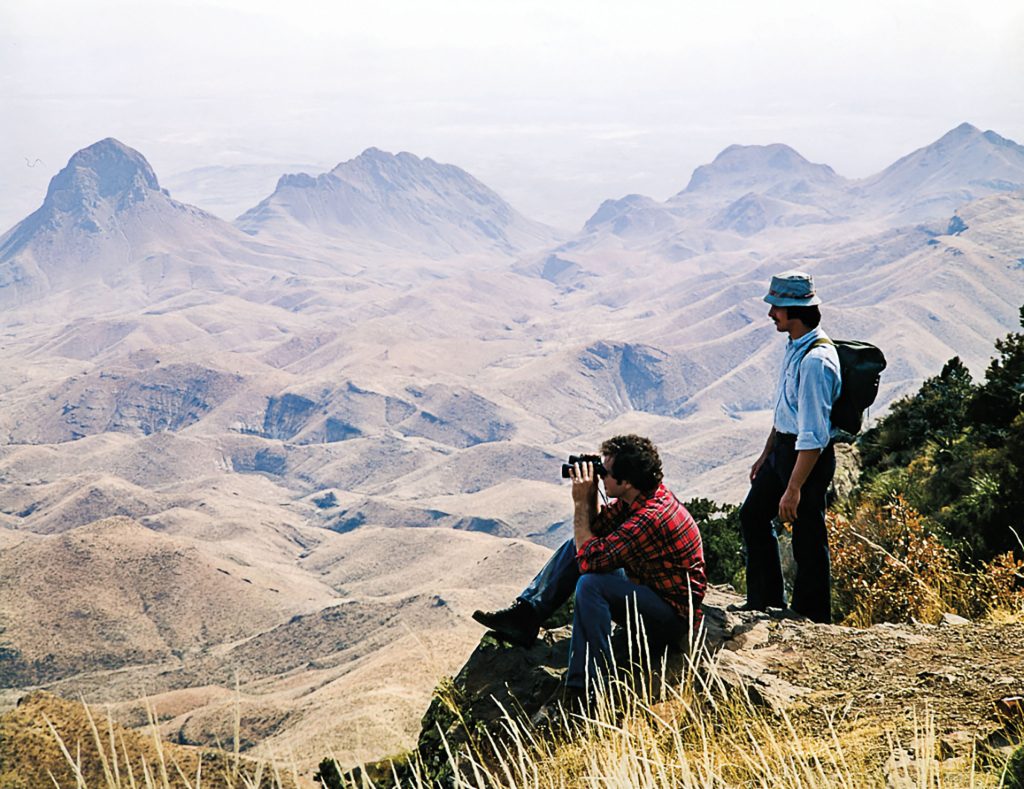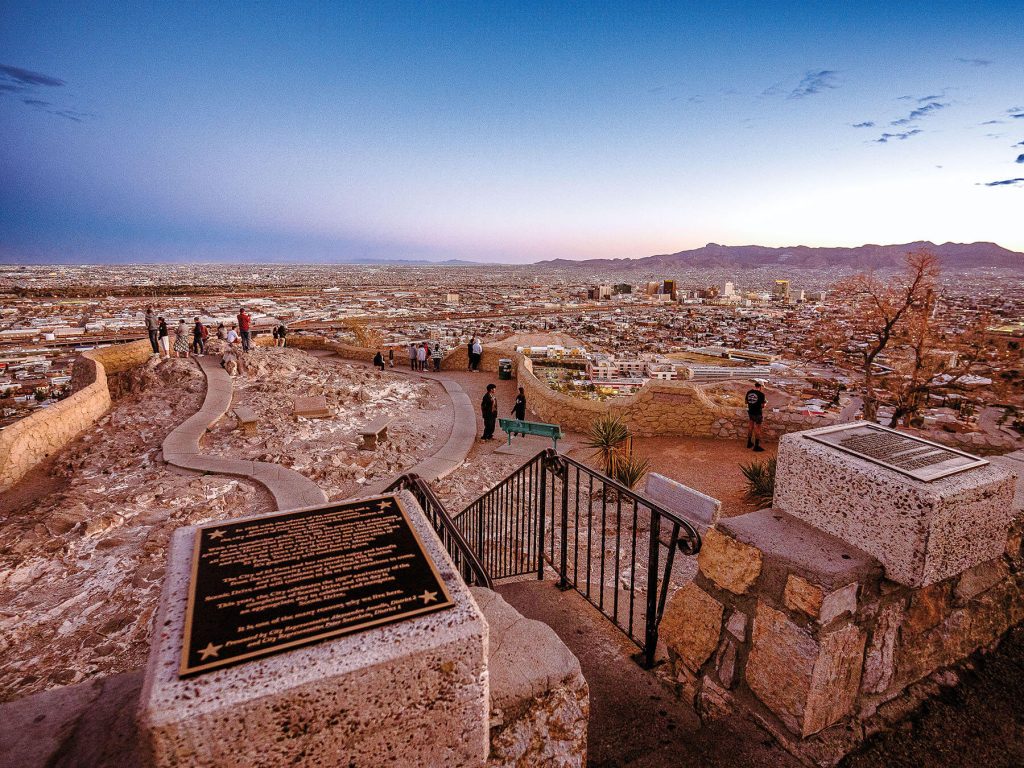Vivian Degollado, the author’s daughter, explores the Santa Ana National Wildlife Refuge in Alamo.
Into the Wild
As kids spend less time outside than ever before, Texas programs provide children with opportunities to reconnect with the state’s natural wonders
By Rubén Degollado
Photographs by Dave Shafer
G
Growing up in the Rio Grande Valley in the 1980s, I had plenty of opportunities to explore. I was what’s now called a “free-range kid,” left to roam the outdoors as I pleased. Some days we didn’t come home until the streetlights came on. During weekends, summers, and breaks from school, my friends and I walked to local parks alone and spent our days pretending we were superheroes fighting off imaginary supervillains.
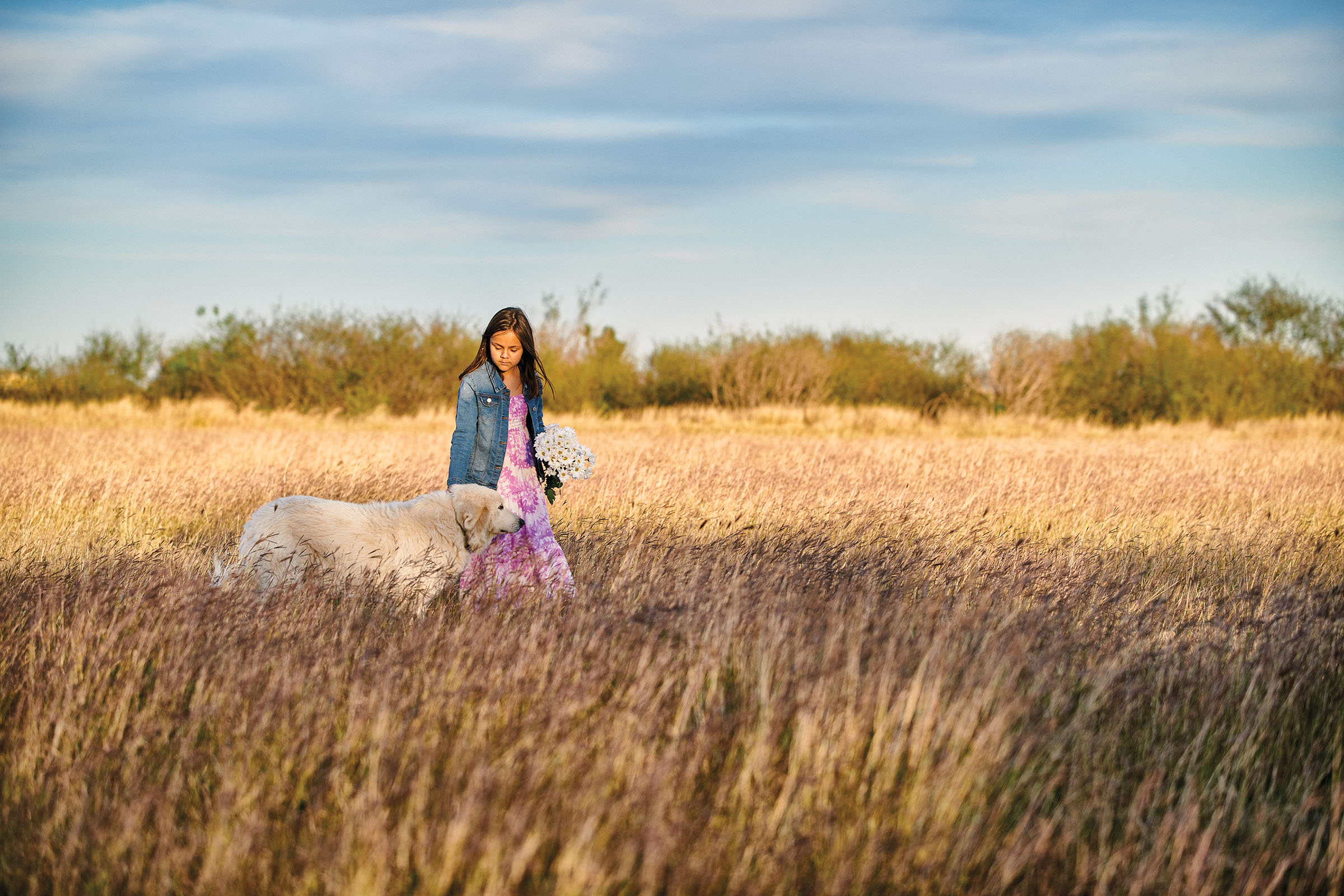
We would meander down the railroad tracks past civilization, living out our own Mexican American Stand by Me (without the dead body, of course). When we got BMX bikes for Christmas, we rode on “the jumps,” which were hard-packed mounds of dirt near the canal behind our neighborhood. On Saturdays, my cousins and I strolled alongside the Rio Grande and played at the abandoned pumphouse that had once provided water to the farmlands of South Texas.
This was before handheld devices, before endless streaming, in the era when television had an end time every night and the screen would turn to static “snow.” Now, my wife, Julie, and I watch our three children—Elijah, 17; Miqueas, 12; Vivian, 9—fight imaginary foes on iPhones, the world at their fingertips.
For years, Julie and I have struggled to get our kids to unplug from their devices and appreciate the outdoors. We want to give them the freedom to roam, scuff their knees, get dirt underneath their fingernails, and allow the musty smell of the outdoors to permeate their clothes. And we’re not alone.
In 2018, Outside magazine published a series called “Rewilding the American Child,” arguing that we are “caught up in one of the largest mass migrations in human history: the movement indoors.” Teens spent an average of seven hours and 22 minutes a day consuming on-screen entertainment in 2019, according to an ABC News report. This phenomenon got worse during the pandemic, with kids’ daily screen use increasing by nearly 1.5 hours, according to JAMA Pediatrics, a monthly peer-reviewed medical journal published by the American Medical Association. Many individuals and organizations throughout Texas are working to reverse the trend of children and families spending too much time inside and are committed to encouraging more exploration of the outdoors.
The Texas Children in Nature Network (TCiNN) is a nonprofit that seeks to ensure equitable access and connection to nature for the state’s children. It is comprised of more than 700 organizations across Texas that work on outreach and engagement. Along with offering technical assistance and educational resources, they host a three-day annual summit and virtual field trips to different sites around Texas.
“Research is showing the mental health, physical health, and social and emotional benefits that come with kids spending time outdoors,” says Sarah Coles, TCiNN’s executive director. “We are seeing increasing amounts of time that kids are spending indoors and behind screens, which affects their development. One of the best ways to combat that is by both playing and learning outdoors.”
Though my own kids enjoy being outside once they’re there, sometimes getting them out the door becomes more work than play. But on a Saturday in November, I convince them to join me on a trip to the Santa Ana National Wildlife Refuge— 2,088 acres of protected land in the Rio Grande Valley. Established in 1943, it’s an internationally known destination that draws birdwatchers from all over the world.
Like many of Texas’ parks and wildlife centers, the refuge prioritizes youth outreach, providing classes in which kids who’ve never spent significant time outdoors can explore the trails. The refuge also hosts bird walks and an hour-and-a-half interpretive tour along a 7-mile loop that tells the story of the refuge and its plants and wildlife. Kids are equipped with a junior ranger book with corresponding activities based on their age. When they’re done, they receive a little wooden nature badge.
“It’s rewarding to see the wonder in children’s eyes once they hit the trails,” says Christine Donald, the U.S. Fish and Wildlife outdoor recreation planner and site manager at the refuge. “We want to make sure the next generation connects to nature. Because who is going to save places like Santa Ana for the next generation?”
The Austin nonprofit Explore Austin is another model organization for these programs. It pairs sixth graders who apply and qualify with a volunteer mentor for six years. The mentor follows an outdoors-based curriculum to help students learn new skills and gain confidence. James Faerber, former program director for Explore Austin, is now the owner and executive director of Outpost Wilderness Adventure. The latter is a program that runs camps and expeditions in Texas and Colorado for people of different ages. His advice for parents trying to get their kids outdoors is to start small, explore their children’s interests, and get involved with groups in their community.
“Just simple things like swimming or going for a walk will work,” Faerber says. “I think most people, kids especially, do actually like spending time outside. They may just not realize that they do. They may not have had the right introduction to it.”
While there is hope for children and families in both rural and urban areas looking to migrate back outdoors, the challenges can be numerous, Coles says. Some common obstacles include lack of free time, access to nature, and financial resources. Working parents might not have the bandwidth to take their kids on wilderness adventures, and many outdoor activities can be daunting and costly. “There are ways of experiencing nature that don’t have to be on a grand scale like going to the Grand Canyon or Big Bend,” says Alice Jansen, TCiNN’s education events coordinator. “You can put a butterfly-friendly plant in your yard or go on a walk in the neighborhood.”
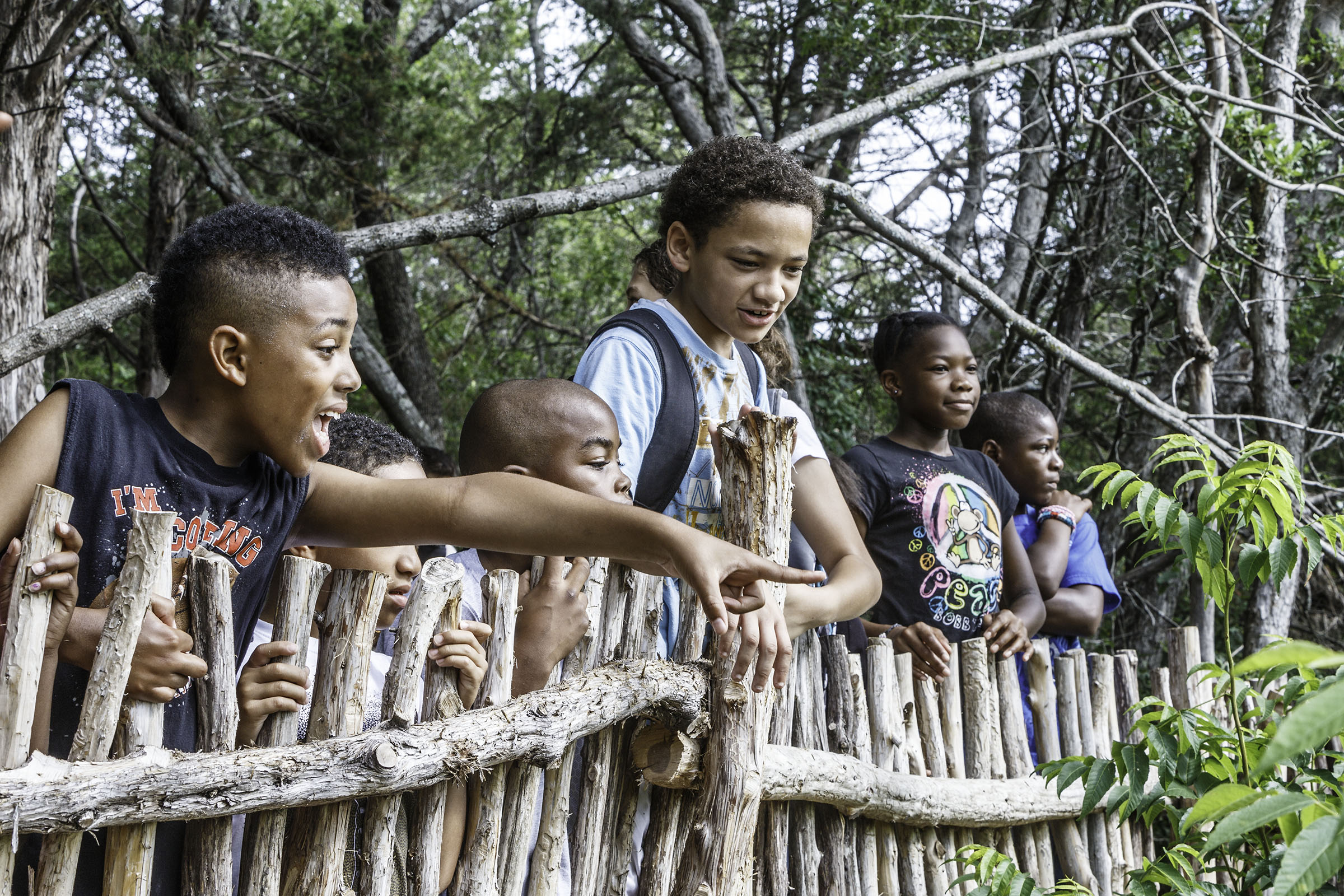
Get Wild
Texas Parks and Wildlife hosts a variety of year-round diversions across the state. Activities include strawberry festivals, duck expos, and other family-friendly outdoor events. Enter online giveaways for the chance to win experiences like archery or fishing, or for the opportunity to meet and talk with game wardens. tpwd.texas.gov/education/get-outside
For ideas on what to do with your kids outdoors, try Nature Challenge, an online tool that lists a range of simple but creative activities, like searching for things that start with each letter of the alphabet. Curated by Texas Children in Nature, Texan by Nature, and the Texas A&M Forest Service, the guide offers challenges, maps, and directories to help children connect with nature.
texasforestinfo.tamu.edu/
naturechallenge
San Antonio-based Black Outside aims to reconnect Black youth to the outdoors. The organization provides summer camp experiences, outdoor-based mentorship, and programs to bring healing to youth impacted by incarceration. blackoutside.org
—Dina Gachman
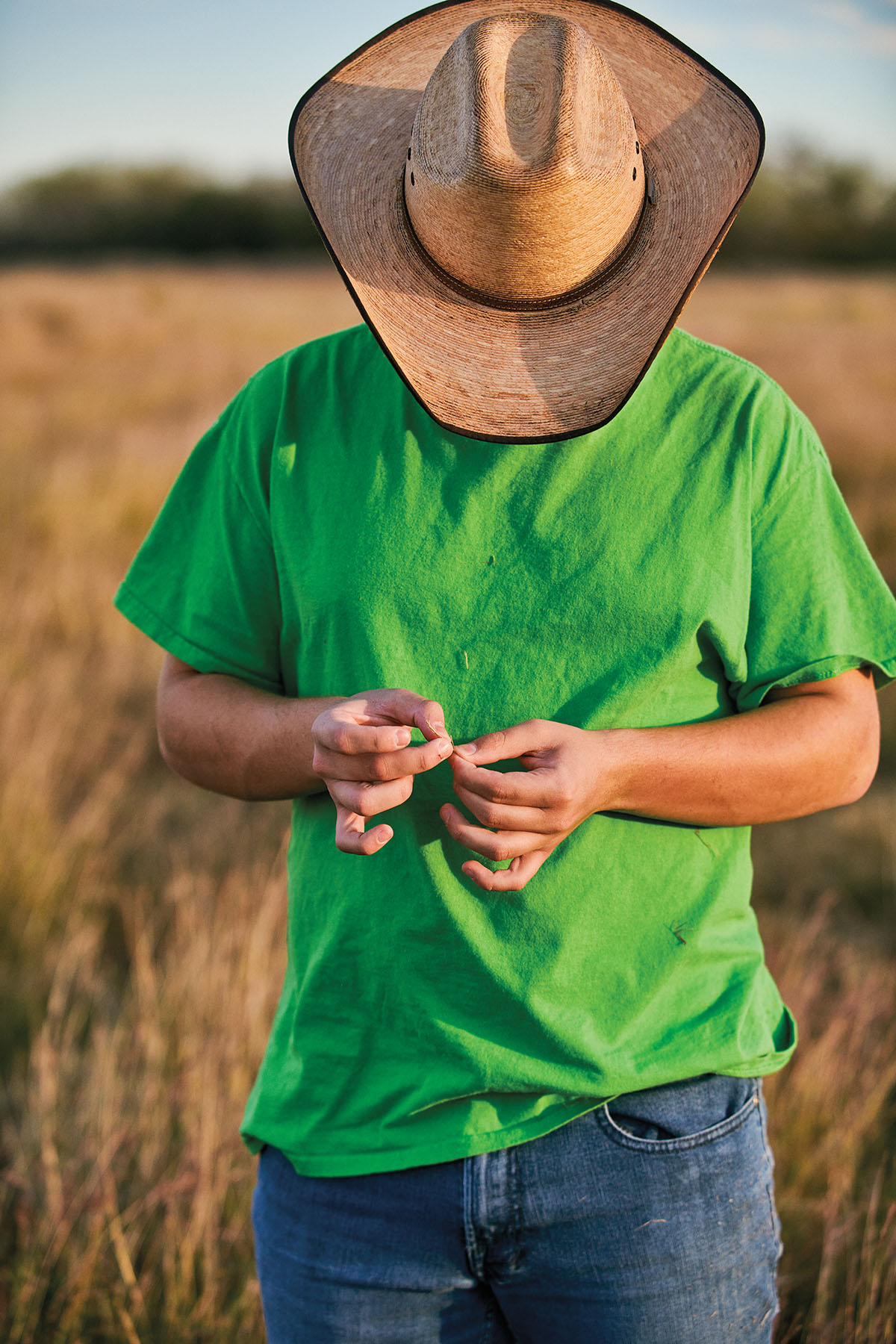
In urban areas, proximity to natural spaces and reliable transportation are often the biggest barriers to getting kids outdoors. TCiNN promotes the 10-Minute Walk, an initiative created by the nonprofit Trust for Public Land, which aims to protect land and create parks for future generations. Cities across the U.S. have pledged to create a park within a 10-minute walk of every resident by either 2030 or 2050. Texas cities that have signed on include Austin, Killeen, San Antonio, Houston, College Station, League City, and Dallas-Fort Worth.
“Another barrier is discomfort,” Coles says. “Families are wary of personal safety.” Factors like heat, mosquitoes, snakes, strangers, or potential emergencies can intimidate people and keep them from going outside or letting their children explore on their own.
In our house, we know some of those fears well. My family and I have spent the last eight years living on a 37-acre ranch in La Feria, a small town in the Rio Grande Valley. The most prominent vegetation in these borderlands is cacti, mesquite, and huisache trees. The wildlife mostly consists of snakes, scorpions, hornets, spiders, bobcats, and coyotes. It seems like almost everything in the RGV is sharp, thorny, and out to get you. After living a few years in Florida and Oregon, Julie and I decided to move the kids back to my home state. Our ranch allows them a number of options for outdoor activities—they can explore the field; ride the tire swing or jump on the trampoline; walk along a levee; and fish in the Arroyo Colorado, which marks the border of our property.
“It’s peaceful,” Elijah says. “I like it here.” Still, we have invested in a copious supply of Band-Aids, bug spray, disinfectants, antibiotics, and anti-itch creams.
Cole says it’s important for parents to model what outdoor time looks like for their children. Julie and I know Miqueas likes nature walks, Vivian prefers riding her bike, and Elijah enjoys longboarding on smooth pavement. We usually agree to do one child’s favorite activity one afternoon and save the others for subsequent weekends. Though it takes coordination and effort, it’s worth it for my kids’ well-being.
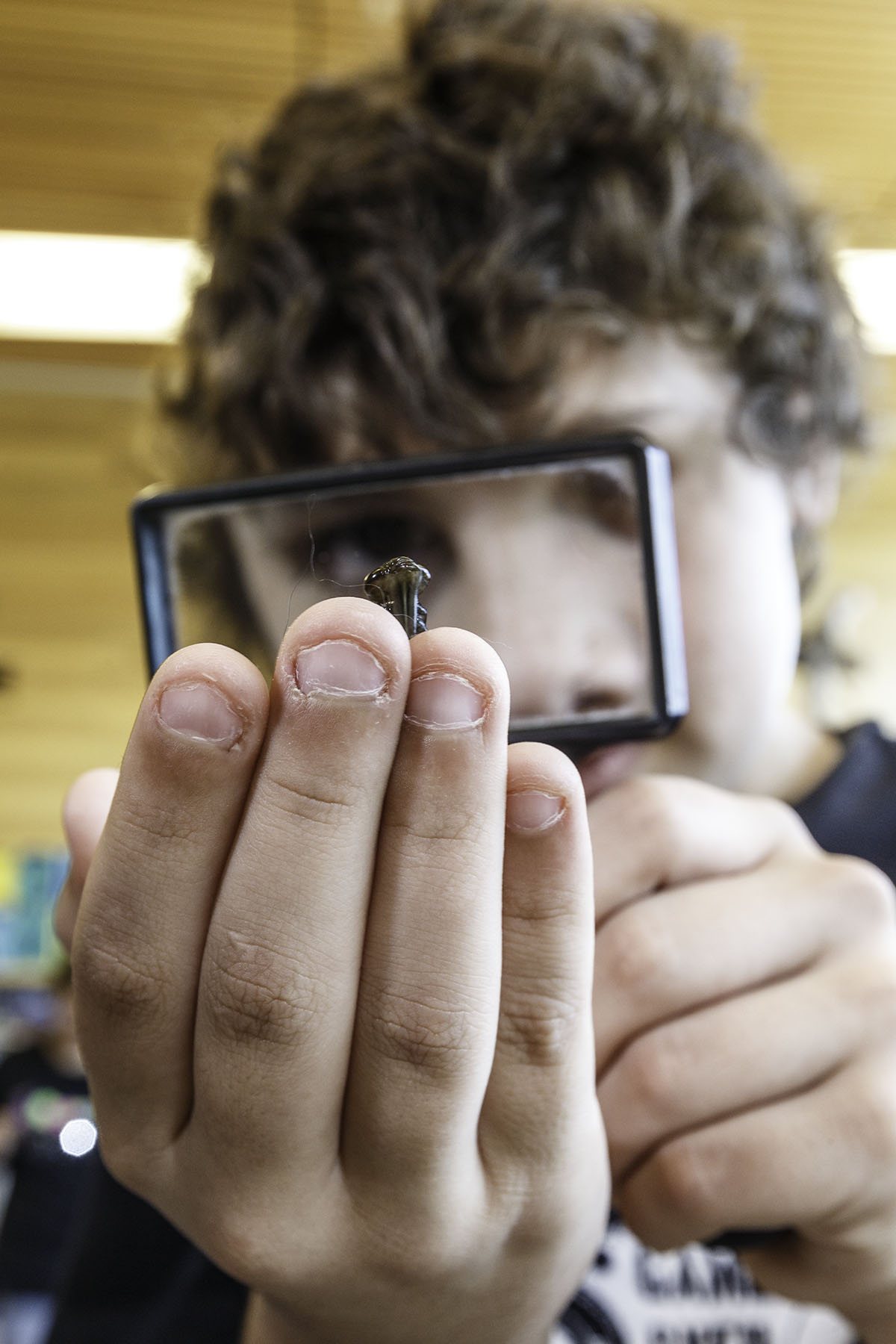
Adventures All Around
From state parks to nature centers, the diverse regions of Texas offer a variety of landscapes to explore.
The Valley Nature Center in Weslaco is a 6-acre park and nature preserve full of hiking trails, colorful butterflies, birdwatching opportunities, tortoises, rabbits, and more.
valleynaturecenter.org
In East Texas, Tyler State Park offers camping, hiking, fishing, and plenty of space for kids to roam the Piney Woods. There are over 13 miles of trails, a spring-fed lake, and boat and kayak rentals. tpwd.texas.gov/state-parks/tyler
The Connemara Meadow Nature Preserve encompasses 72 acres of land in North Texas with meadow bird walks, places to play, and plenty of space for kids to study native plants and insects. connemaraconservancy.org
Monahans Sandhills State Park is a giant sandbox about 30 miles west of Odessa. Families can rent toboggans or disks from the visitor center and surf the sand dunes.
tpwd.texas.gov
Kids can run wild at Bastrop State Park, a Central Texas gem comprised of 6,000-plus acres of towering pines, swimming and fishing spots, woodland trails, and blooming wildflowers.
tpwd.texas.gov
Buffalo Springs Lake is a 55-acre oasis in Lubbock, where families can hike a nature trail, fish off a pier, or relax on one of the area’s beaches. buffalospringslake.net
—D.G.
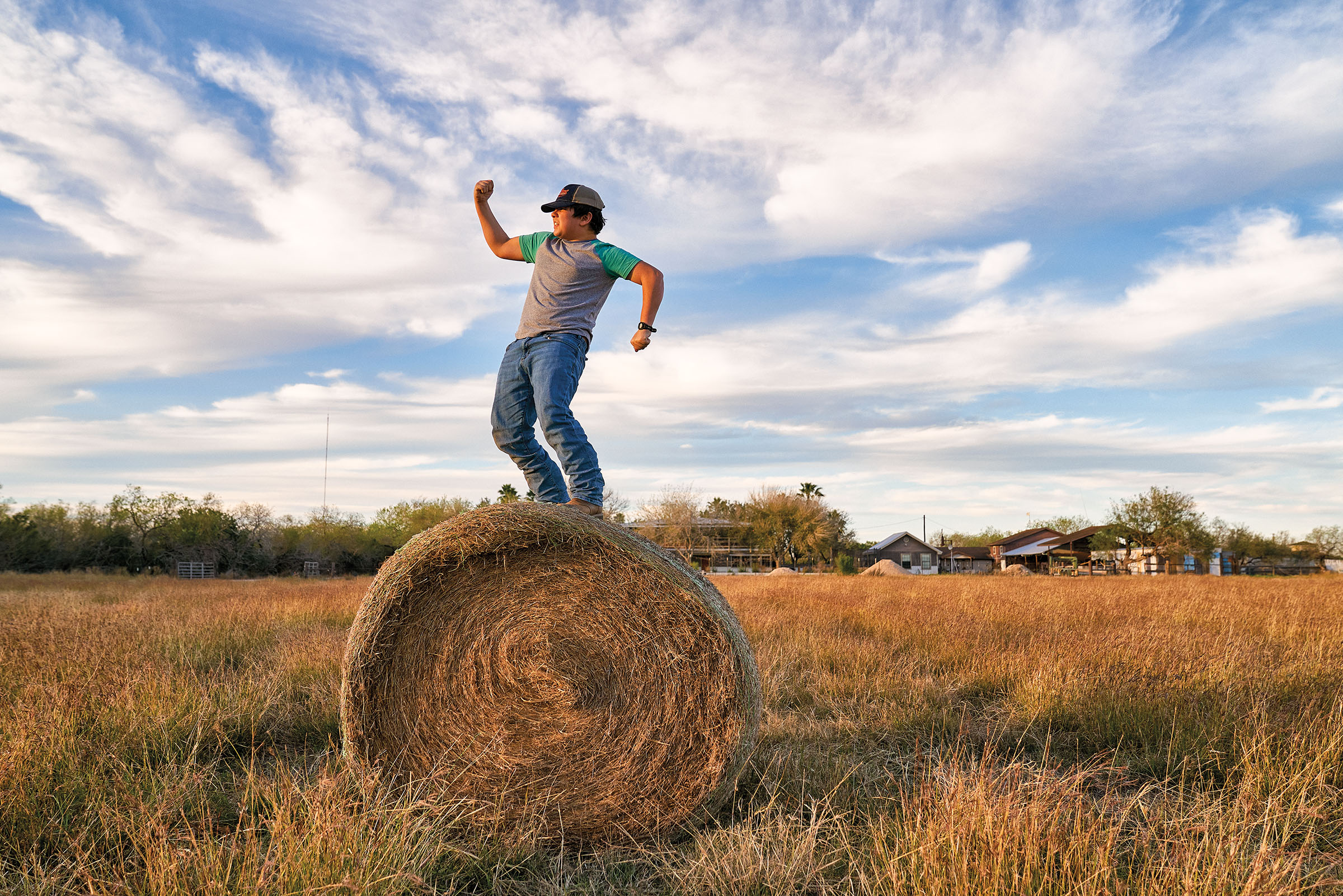
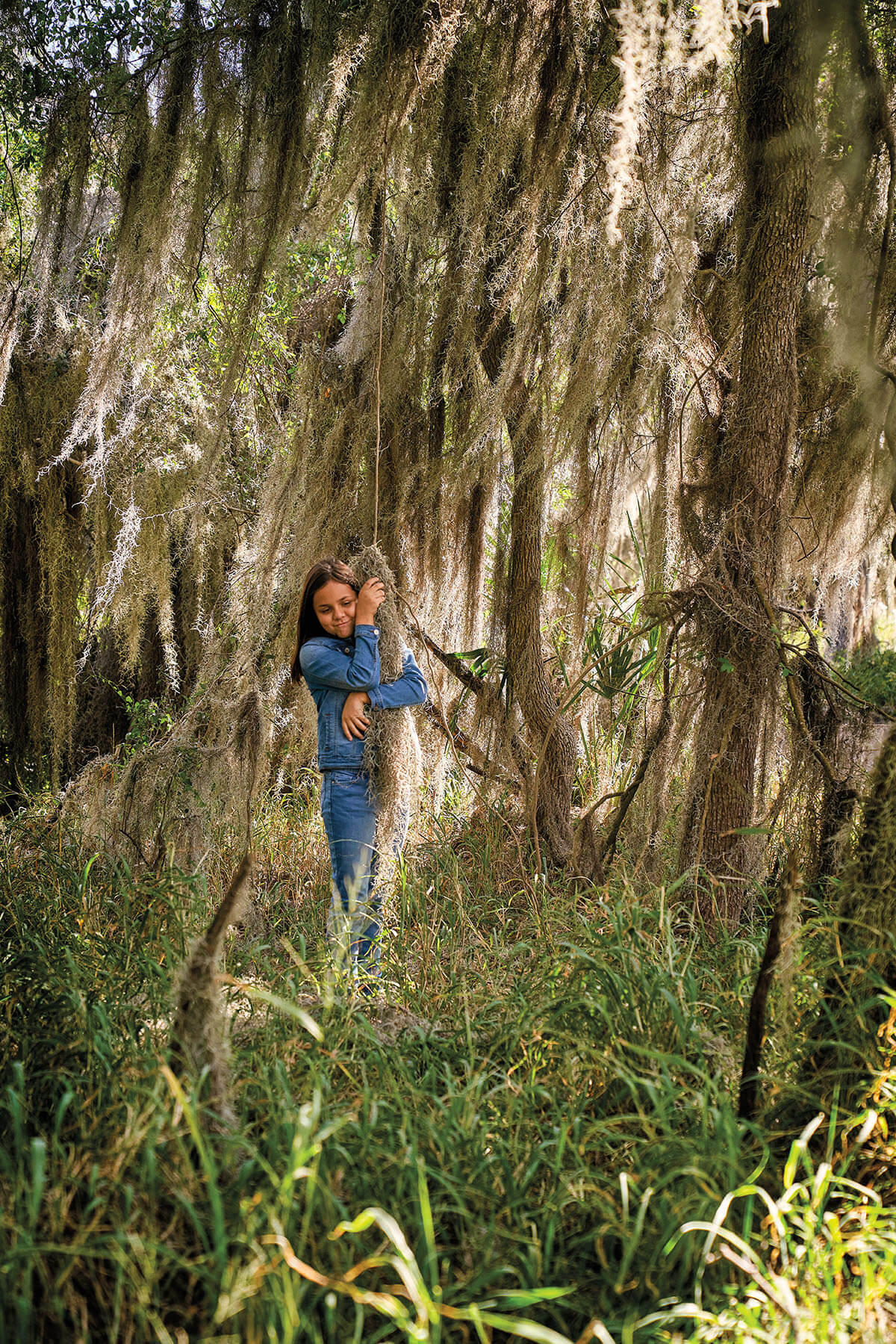
In 2016, the Texas Department of State Health Services launched an initiative called Outdoor Learning Environment (OLE!) Texas. The strategy helps early childcare and education programs find resources to build nature-based outdoor spaces for kids to play in. According to DSHS, over 30% of Texas children between 2 and 4 are overweight or obese. OLE! Texas aims to promote physical activity and reduce children’s chances of obesity early on. Numerous studies have proven other benefits of time spent outside on both mental and physical health. It also reduces stress, which aids in lowering blood pressure, heart rate, and cortisol—the hormone released when we experience the fight-or-flight response.
“Spending time in nature helps young people be more focused and engaged in the classroom,” Jansen says. “It teaches them to become stewards of the environment, which is especially important today because of climate change.”
At the Santa Ana Wildlife Refuge, I meet Vanessa Lopez Molina, a mother who has just finished a hike with her son. She tells me she and her husband, Joseph, consider themselves outdoorsy people and want to instill the same values in their son. She mentions time outside has provided benefits beyond physical activity. “It’s helped him with his writing skills, too,” she says. “He’s much more descriptive and asks probing questions.”
As we hit the trails, my daughter takes the map and I appoint her our navigator. We go up an access road and find the trailhead. The deeper we walk into the trees, the quieter it gets. We can feel the air change as we enter the subtropical woodland where the trees provide more shade and Spanish moss grows in long, lacy tendrils. It’s beautiful. But this isn’t what astounds me the most. It’s the look on my children’s faces. I can see them processing:
“Look at how big these trees are,” Elijah says. “How old do you think they are?”
“What’s that stuff growing all over the trees?” Vivian asks.
“That’s Spanish moss,” I tell her. “The same stuff your great-grandmother used to decorate the Nativity scene with at Christmas.”
We stop at Pintail Lakes and admire the ducks. I point out that Mexico is just beyond the trees. Their eyes widen, and I know they will remember this day. “Mexico is really just over there?” Miqueas says. “It’s almost like I’m in the past.”
I want to ask him what he means, but I decide to let him continue exploring ahead of us. He doesn’t know it, but I think that by referencing the past, he’s touching on something larger—a time generations ago when people spent much more time in nature. I am hoping the miles we have hiked today will beget more miles and lead to a wilder future, one where they feel the exhilarating freedom of roaming the outdoors.—Additional reporting by Mary Huber
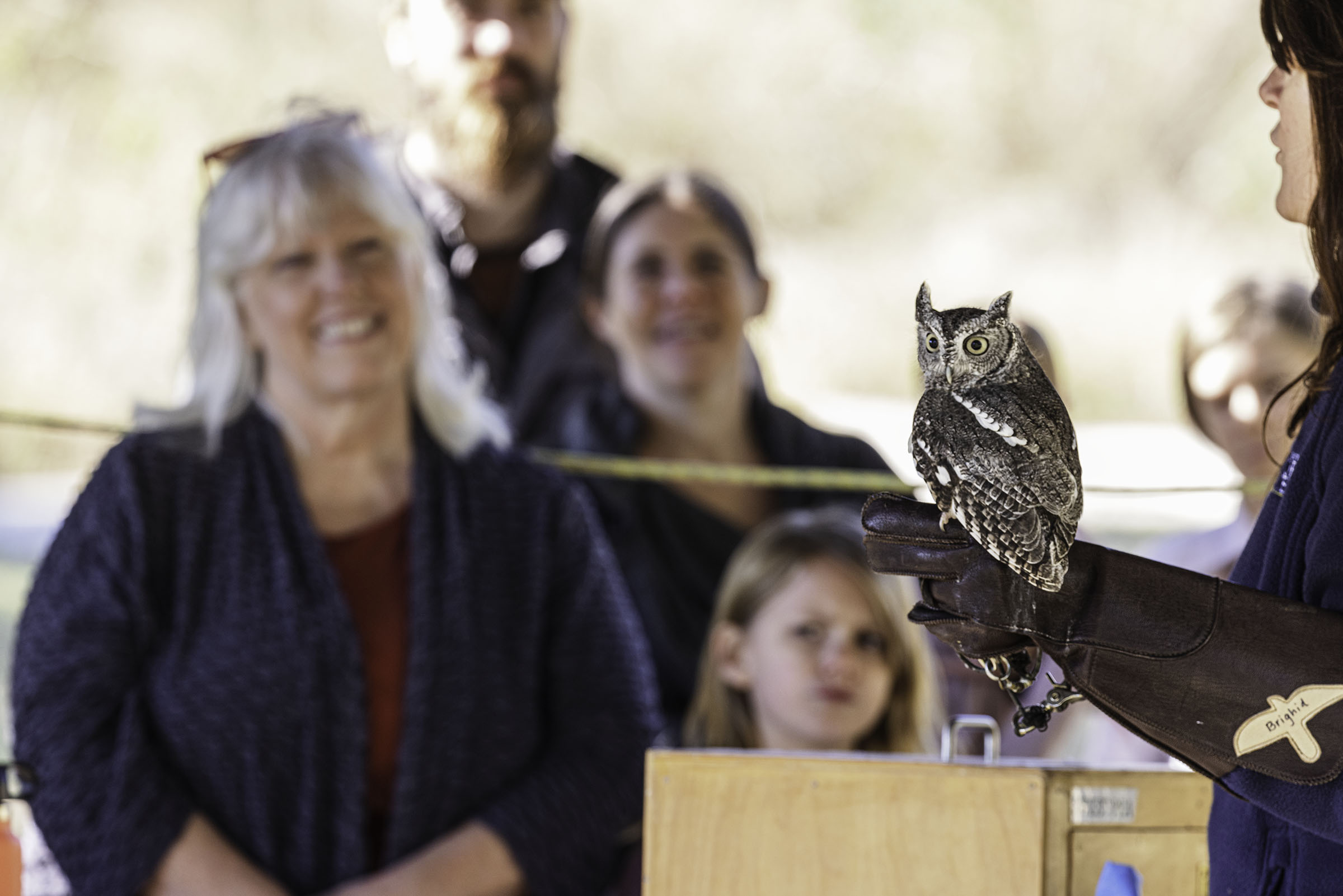
School is Out
Near Fort Davis in West Texas, children can explore the Chihuahuan Desert Research Institute’s 507-acre preserve with canyons, rocky outcroppings, and a spring. The botanical garden and nature center showcase the diverse region and its yucca, agave, and ocotillo. Events include Critter Camp or Herp Day, where students learn about amphibians and reptiles. Bring a hat and sunscreen. cdri.org
The Blackland Prairie Raptor Center northeast of Dallas is a rehabilitation center and sanctuary for owls, falcons, eagles, and birds of prey found all over the state. The center’s 66 acres on the shores of Lavon Lake are open to the public the first and third Saturday each month and for special events. They also have hiking trails, where kids can learn the importance of preserving and maintaining the Blackland Prairie. bpraptorcenter.org
It’s not technically outside, but Inner Space Caverns near Georgetown in Central Texas offers tours and events that get kids thinking about what lies beneath playgrounds and forests. Prehistoric animal bones, impressive rock formations, and experienced tour guides hold the attention of even the most restless children. Outside activities include a playground, zipline, and a mining trough for gemstone panning. innerspacecavern.com
—D.G.
